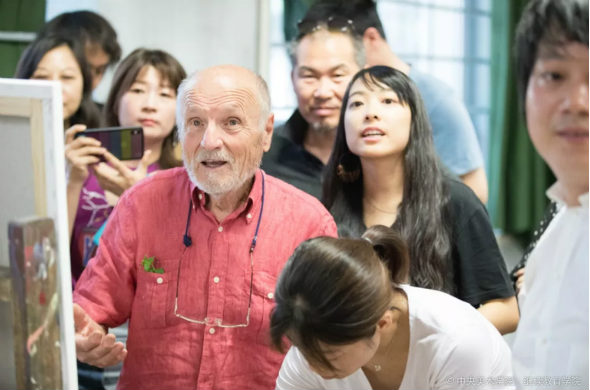
Based on the open environment of contemporary art education, the cooperation between colleges and universities around the world is becoming closer, more diversified and consummated. It also provides a broad platform for promoting an exchange among different cultures while training international art talent. As a secondary school engaged in academic and non-academic education based in the Central Academy of Fine Arts, CAFA School of Continuing Education continues to uphold the concept of “l(fā)ife-long education”, relying on the academic advantages of the “double first-class” academic institutions of the Central Academy of Fine Arts, and is committed to improving the quality of national aesthetic education. In recent years, the School of Continuing Education has focused on renewing its teaching model, building a global talent learning channel and it has comprehensively strengthened international exchanges and cooperation.

Feng Haitao, Dean of the CAFA School of Continuing Education and Professor Elena Blanch jointly signed the Memorandum of Cooperation
Recently, Professor Elena Blanch, Dean of the School of Fine Arts of the Complutense University of Madrid, visited the Central Academy of Fine Arts. Feng Haitao, Dean of the CAFA School of Continuing Education and Professor Elena Blanch jointly signed the Memorandum of Cooperation between the Central Academy of Fine Arts and the School of Fine Arts of the Complutense University of Madrid on behalf of the two institutions. In the future, the two universities will carry out various forms of teaching cooperation through pre-master’s programs and jointly establish an academic platform for mutual learning and exchange.
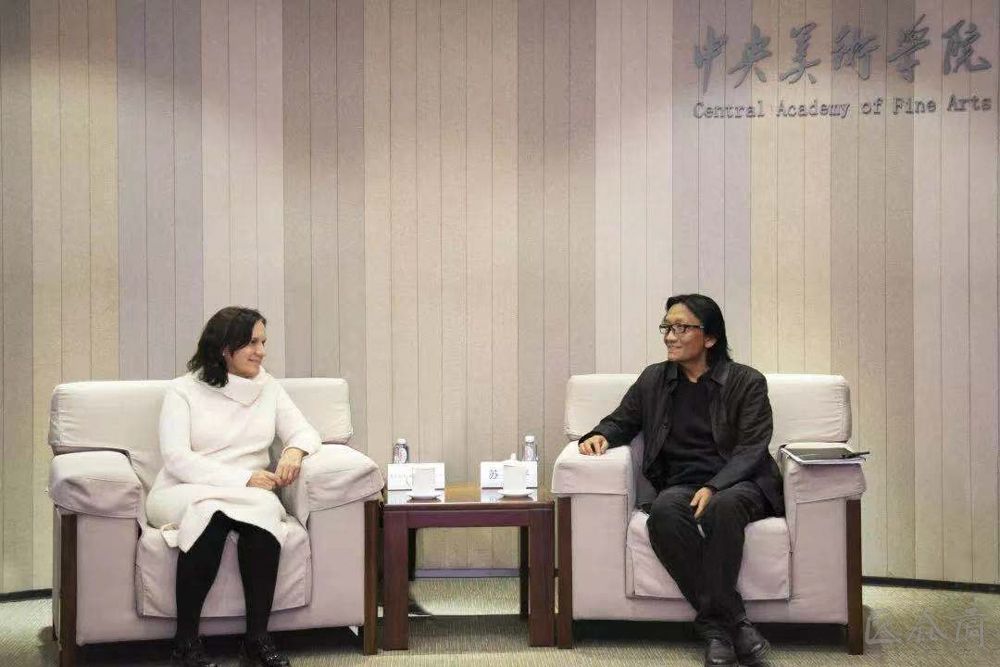
Professor Su Xinping communicated with Professor Elena Blanch
Su Xinping, Vice President of the Central Academy of Fine Arts, attended the signing meeting, and his evaluation highly summarized the future development prospects of this cooperation: “In recent years, China and Spain have had a lot of art exchanges. But at a teaching level, we just started to understand each other. The School of Fine Arts at the Complutense University of Madrid is a collection that combines traditional, modern and contemporary methods. I believe that the cooperation between both sides will gradually involve an inter-university level and trigger more extensive exchanges.”
Interview with Professor Elena Blanch

Professor Elena Blanch was interviewed by CAFA ART INFO
CAFA ART INFO: This time the CAFA School of Continuing Education was selected as the only cooperation unit for the postgraduate program of the Complutense University of Madrid in China. How did this program begin? And how will it be carried out in the future?
Professor Elena Blanch: The Complutense University of Madrid has the same status in Spain as Central Academy of Fine Arts in China. The cultures of the two countries are different but such cooperation can enhance students’ mutual learning, especially exchanges between different cultures. In the summer, we held a seminar together. Many Chinese students, especially those from the Central Academy of Fine Arts, participated. The students from both schools learned a lot from each other. From the perspective of specific teaching cooperation, we will require students that apply for cooperation to meet certain Spanish requirements. Students’ works are also very important. The actual ability will meet the requirements, and they will be selected on merit. Students who have been accepted will learn Spanish one year in advance, and will learn basic professional techniques and so on.
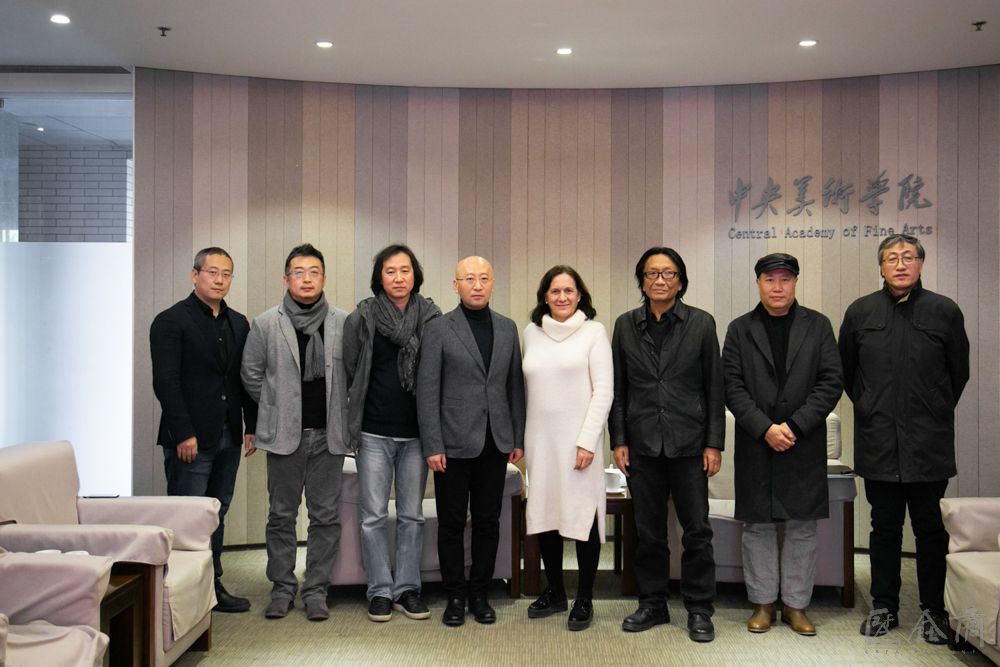
CAFA ART INFO: You have also mentioned that last year you have jointly held a mater workshop to build a bridge for culture exchanges. You taught the history of Spanish sculpture, sculpture technique and trained in three-dimensional thinking for painters. What has impressed you during the process when you communicated with Chinese students?
Professor Elena Blanch: The students in the summer class were very excellent and they were very well prepared, but we can obviously perceive that the methods of solving problems in the art fields in the East and the West are different, and the starting point is also different, so Spanish teachers and students can actually learn a lot from them. The students who went to the Complutense University of Madrid also encountered many different methods when creating, such as canvases and processing methods, so both sides have gained something. Perhaps for a student, travels can provide more help for their career.
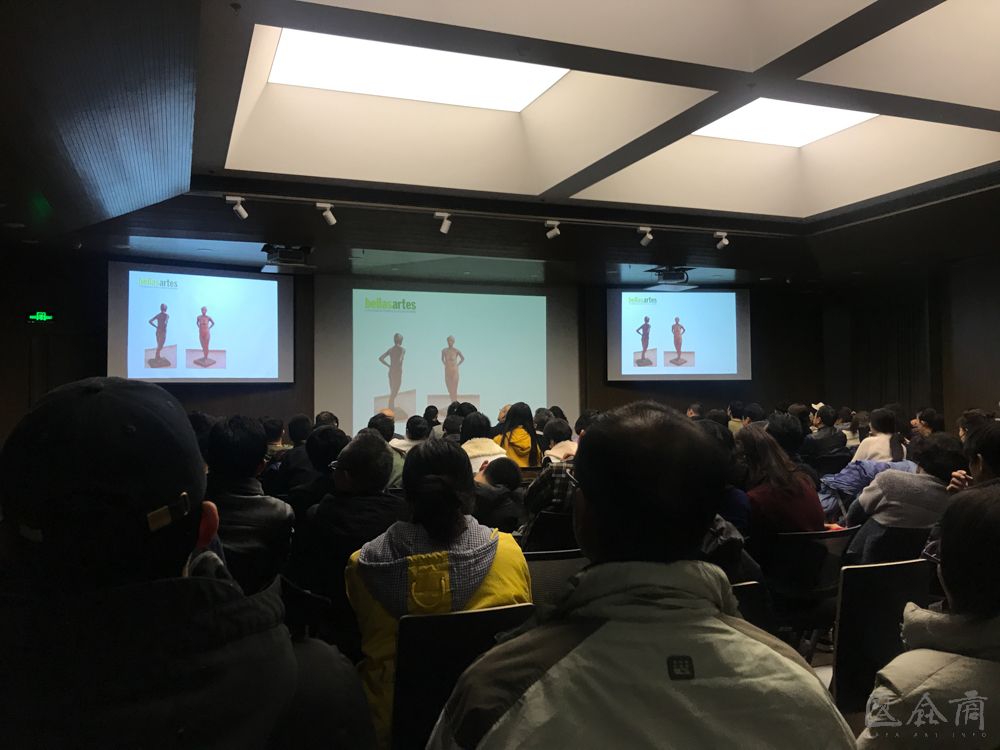
Professor Elena Blanch gave a lecture at China Central Academy of Fine Arts
CAFA ART INFO: You are also an artist and sculptor. I heard that you are also very interested in Chinese paintings. Can you talk about your understanding of Chinese art in detail? I heard that this is your first visit to the Central Academy of Fine Arts. Do you have a new understanding of the state of our art education during your contact?
Professor Elena Blanch: Yes, I visited a lot of departments and studios today and met a lot of students. In fact, the students of each college have different advantages. The cultural differences between the two sides will lead to diversified treatments of art.
I was very impressed by the landscape paintings in traditional Chinese
paintings, though Europe has landscape paintings, European landscape paintings are completely different and more realistic and more concrete. However, Chinese landscape painting pays more attention to the perception of the artists. They consider making the picture more meaningful and more beautiful. For them, the likeness may not be the most important.
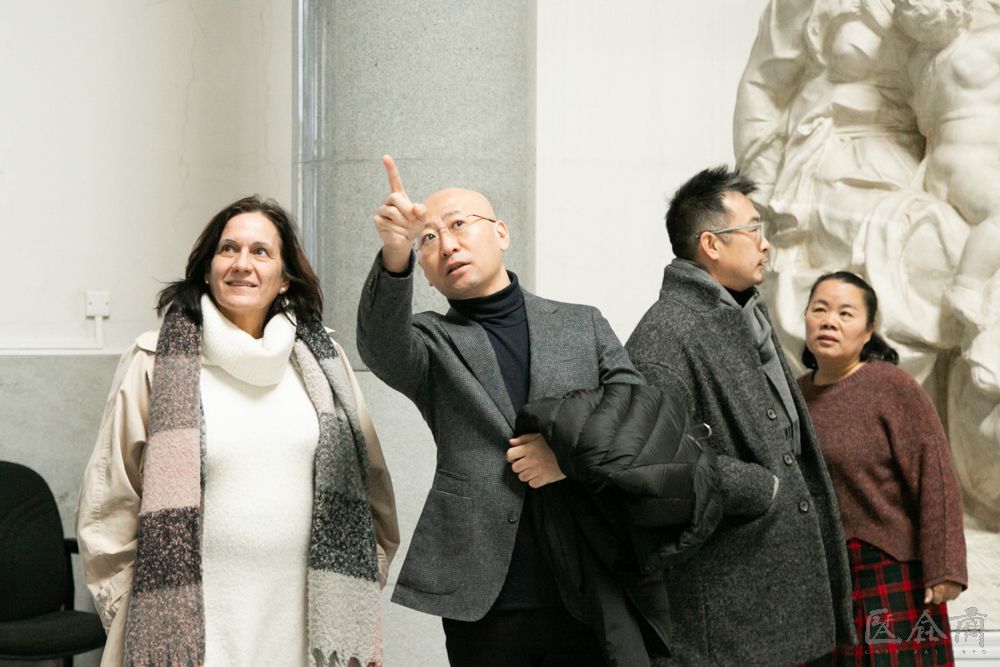
Professor Elena Blanch visited China Cenral Academy of Fine Arts
CAFA ART INFO: As far as we know, your college was originally the San Fernando Royal Academy of Fine Arts, which has a long history. You adhere to the traditional painting education model, which is also of significance to contemporary China. Facing the development of diversification, modernization and technology, how do you think you can better explore traditional, modern and contemporary art education modes in teaching and in the cooperation between the two institutions?
Professor Elena Blanch: We are very open to such problems. We don’t require students to do anything. For example, they can adhere to tradition or not at all. We teach them how to become an artist, we teach them basic techniques, creative methods, etc. The rest of the way is for the students to go by themselves. In these areas, we have no restrictions.
At the beginning, we handed over the basic creative methods to the students, but in the later stages of creation, they will not be restricted too much. We hope that they will let go of their own creations, so there will not be too many problems.
CAFA ART INFO: As far as you are concerned, both Spain and China have complex and splendid cultures, a new era has begun, and the artistic exchanges between the two countries have become more frequent. Do you have any expectations for more comprehensive artistic cooperation in the future?
Professor Elena Blanch: Our communications are very diverse, including those between teachers and students, between students from both sides, between teachers from both sides. Starting from this collaboration, multiple art research and scientific research projects will be launched in the future. It is also worth the expectation of students and artists from the two institutions in China and Spain.
Text by Zhang Yizhi, translated by Sue/CAFA ART INFfO
Photo by Hu Sichen/CAFA ART INFO




























